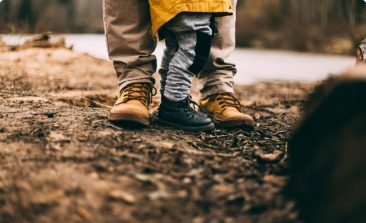Newborn Initial Stages of Communication
The ability to pay attention to the sound of a human voice is “hard-wired” into a baby’s brain. The ability to understand you depends on their hearing you talk. Your kid will communicate with you through noises, facial expressions, and body language long before they can speak in clear words.
There are various techniques to actively listen to your baby and promote language development, including:
Recognize that your baby’s main form of communication is crying.
Once they start weeping, tend to their requirements as quickly as you can to show them that you are aware of and understand their wants.
Look your kid in the eye and encourage them with smiles and chat while attentively listening to their cries and noises.
Baby’s first communication is crying.
Babies may communicate their thoughts and feelings to you extremely effectively even before they are born. It is known as crying.
Babies cry to let you know what they need or want, such as more cuddling or none at all, or that they are hungry or not hungry enough, too sleepy or not weary enough, or too cold or too warm. Moreover, infants can cry for no apparent cause.
Your new-borns’ only means of communicating with you is through crying. There is no such thing as a naughty newborn, therefore your kid isn’t crying just to irritate you. Responding to your baby’s cries won’t do any good.
How infant speech begins
From birth, your kid begins to learn a great deal about words and talking. Your baby can learn the fundamentals of communication just by listening to and seeing you talk.
For instance, your newborn speaks to you through making eye contact. Your infant may fixate on your face and observe your mouth. Every word you say and sound you produce is being carefully heard by your baby as well.
Your infant learns to speak when they are about 7-8 weeks old. Your infant will likely start dribbling and babbling soon.
Additionally, your kid will begin to make more sounds as they grow. To catch your attention, for instance, your kid may try sounds like sneezing, coughing, gagging, and shrieking.
Assistance with family communication issues
Services are offered to assist families with any kind of communication issue. For instance, if you need assistance with:
You believe your child or infant has hearing issues.
By the age of two, your toddler is not speaking at all.
By the age of two, your child is unable to understand what you are saying.
Your child struggles with speech in some way, such as stuttering.
You and your child have communication issues.
Things to keep in mind
Paying attention, respecting the child’s sentiments, and being aware of your voice tone are all essential components of effective communication with youngsters.
Make sure to set out some time each day, even if you have a busy schedule, to just sit and listen to your child.
When adults encourage and compliment children, they thrive.















































